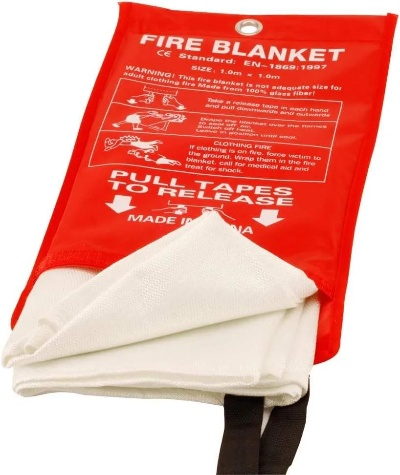Understanding the Fire Safety Standards for Textile Mills
: Understanding the Fire Safety Standards for Textile Mills,In recent years, with the rapid development of textile industry, the number of textile mills has been increasing. However, due to the characteristics of textile mills such as large production scale, complex structure and high energy consumption, fire hazards have become increasingly prominent. Therefore, it is important to understand the fire safety standards for textile mills and implement them in practice.,The fire safety standards for textile mills mainly include the following aspects: firstly, the design and construction of textile mills should meet the national fire safety standards; secondly, the use of materials and equipment should comply with the relevant national regulations; thirdly, the production process and storage facilities should be designed to prevent accidents caused by fire; fourthly, the emergency response and evacuation procedures should be established and implemented; fifthly, the training of employees and the organization of regular inspections should be carried out to ensure the implementation of the fire safety standards.,In summary, understanding the fire safety standards for textile mills is crucial for ensuring the safe operation of textile mills and protecting people's lives and property. By implementing these standards, we can effectively prevent and reduce fire incidents, improve the safety level of textile mills, and promote the sustainable development of the textile industry.
Introduction: In the world of textile production, fire safety is not just a concern but a requirement. A well-planned and implemented fire safety system can save lives and minimize financial losses in case of an emergency. This guide will provide an overview of the fire safety standards applicable to textile mills, along with practical tips on how to maintain these standards.

Fire Safety Standards for Textile Mills: The fire safety standards for textile mills are designed to ensure that the manufacturing process does not pose a risk to human life or property. These standards cover everything from the design of the facility to the management of fire risks. Here's a breakdown of some of the key standards:
-
Building Design Codes: The building design must comply with the latest fire safety regulations, ensuring that all areas are designed to resist fire spread.
-
Ventilation Systems: Adequate ventilation systems must be installed to prevent the buildup of combustible materials and gases in enclosed spaces.
-
Electrical Wiring: All electrical wiring must be in compliance with safety standards, including the use of flame-retardant materials where required.
-
Hazardous Materials Management: Any hazardous chemicals used in the manufacturing process must be stored and handled safely, with proper ventilation and monitoring systems in place.
-
Emergency Response Plans: Comprehensive emergency response plans must be in place, detailing how to respond to different types of fires and emergencies.
Practical Tips for Maintaining Fire Safety Standards: To ensure that your textile mill meets these standards, there are several practical tips that can be implemented:
-
Conduct regular inspections: Regular inspections of the facility can help identify potential fire hazards and address them before they become major problems.
-
Invest in advanced technology: Advanced technologies such as smoke detectors, sprinkler systems, and automatic extinguishers can significantly reduce the risk of fire outbreaks.
-
Train staff: Staff should be trained on fire safety procedures and their roles in preventing and responding to fires.
-
Ensure adequate ventilation: Properly designed and maintained ventilation systems can help prevent the buildup of combustible materials in enclosed spaces.
-
Implement a comprehensive emergency plan: A well-designed emergency response plan can help ensure that everyone knows what to do in the event of a fire.
Case Study: One example of effective fire safety measures in a textile mill is the implementation of a comprehensive fire safety program by a leading textile company in China. The company has invested heavily in state-of-the-art fire detection and suppression systems, including advanced smoke detectors and automatic sprinkler systems. Additionally, the company regularly conducts training sessions for its employees on fire safety procedures and emergency response techniques. As a result, the company has been able to significantly reduce the risk of fire outbreaks and minimize the impact of any incidents that do occur.
Conclusion: In conclusion, fire safety is critical for textile mills, and implementing appropriate standards and practices can help mitigate the risks associated with these operations. By following best practices and investing in advanced technology, textile mills can create a safer environment for both employees and customers while maintaining profitability. Remember, prevention is always better than cure, and investing in fire safety today can pay dividends in the long run.

纺织厂防火等级概述
纺织厂作为工业生产的重要环节,其防火等级对于保障员工生命财产安全、维护社会稳定具有重要意义,根据纺织厂的具体情况,我们将探讨其防火等级的划分标准及案例分析。
纺织厂防火等级的划分标准
- 初级防火等级:适用于小型、分散的纺织厂,主要考虑的是日常生产过程中的基本安全,这些厂区通常配备基本的消防设施和应急预案,以应对日常火灾风险。
- 中级防火等级:针对大型、集中的纺织厂,在初级防火等级的基础上,增加了更多的防火措施和设备,这些厂区需要更加严格地遵守消防法规,定期进行消防演练和培训,确保员工熟悉应急预案。
- 高级防火等级:针对特殊行业或特殊环境下的纺织厂,如高温、高湿、易燃材料等,需要更高的防火等级,这些厂区需要采用先进的防火技术和设备,如自动喷淋系统、烟雾探测器等,以确保在火灾发生时能够迅速有效地控制火势。
案例分析
以下是一个具体的纺织厂防火等级案例分析:
某大型纺织厂
该纺织厂位于工业园区内,规模较大且集中,该厂采用了先进的防火技术和设备,包括自动喷淋系统、烟雾探测器等,该厂在防火等级上采取了更为严格的措施,定期进行消防演练和培训,确保员工熟悉应急预案,该厂还配备了专业的消防队伍和应急救援队伍,以应对突发火灾事件。
该纺织厂达到了高级防火等级的标准,采用了先进的防火技术和设备,有效地降低了火灾风险。
英文表格补充说明
以下是一个关于纺织厂防火等级的英文表格补充说明:
| 防火等级 | 描述 | 相关措施 |
|---|---|---|
| 初级防火等级 | 小型分散纺织厂 | 配备基本消防设施和应急预案 |
| 中级防火等级 | 大型集中纺织厂 | 遵守消防法规,定期进行消防演练和培训,采用先进的防火技术和设备 |
| 高级防火等级 | 特殊行业或特殊环境下的纺织厂 | 采用先进的防火技术和设备,配备专业的消防队伍和应急救援队伍 |
纺织厂的防火等级对于保障员工生命财产安全、维护社会稳定具有重要意义,在纺织厂的日常生产过程中,应严格按照防火等级的要求,采取相应的防火措施和设备,确保生产安全,对于特殊行业或特殊环境下的纺织厂,应更加注重防火等级的提高,采用先进的防火技术和设备,以应对火灾风险。
Articles related to the knowledge points of this article:
The Story of Fuyang Silkweaving Factory
A Comprehensive Guide to Joachim Weaving Factory
The Story of Nanning Textile Factory School



